Everything You Need to Know About Buying Paint
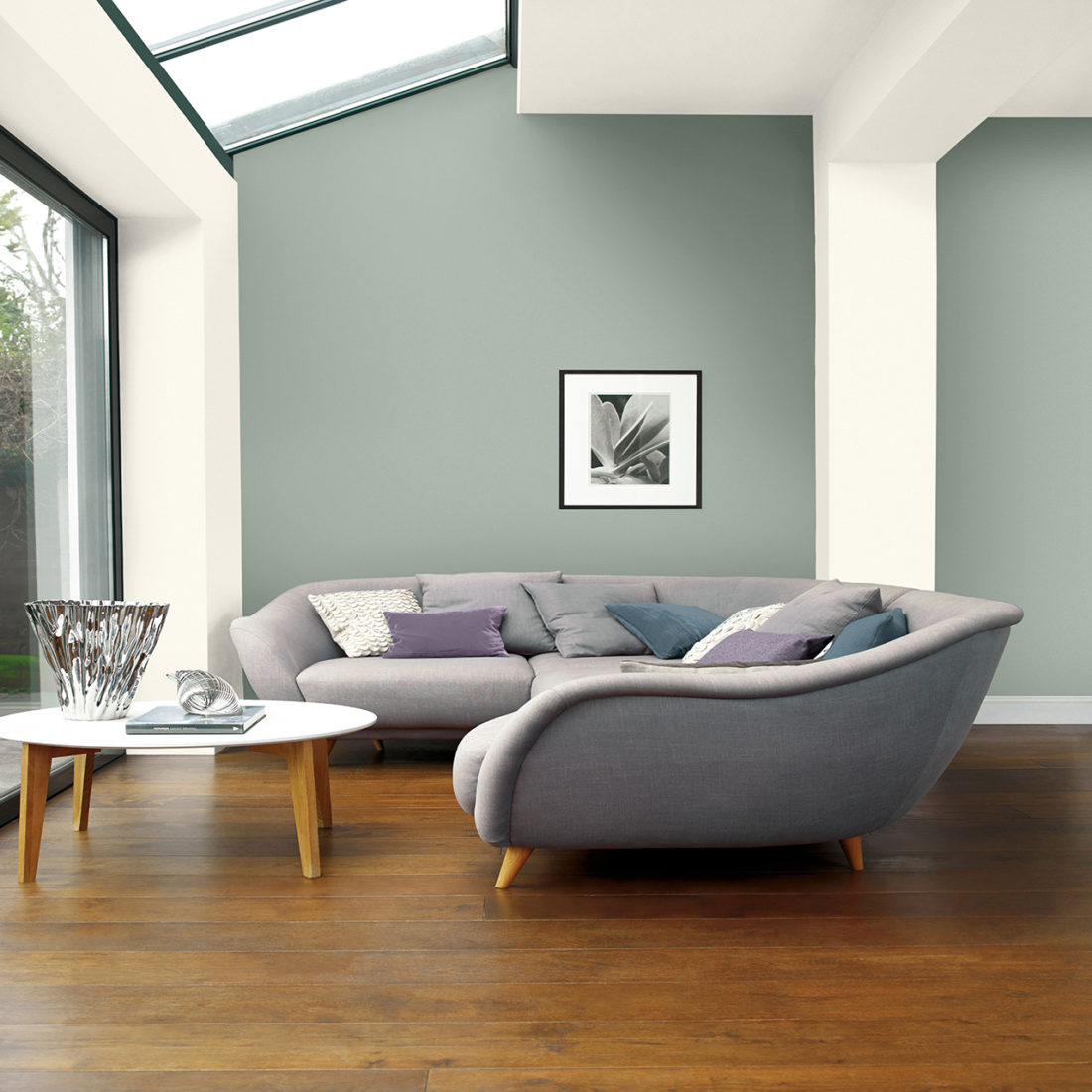
Maybe you’ve moved into a new home, or maybe it’s just time for a change – either way, painting your home is something we all face at least a handful of times and knowing where to start when it comes to buying paint can be tricky.
In this guide, we’ve gathered all of our expert tips and insider advice on buying paint to make your decorating journey as easy as can be; read on to discover what type of paint to choose, how to pick the right colour and everything you’ll need to get the job done.
How to choose the right type of paint
When it comes to buying interior paint, it’s easy to get overwhelmed with the sheer amount of paint finishes available, and knowing exactly which one will suit your room best can be confusing. We’ve broken down the main types of paint finish out there so you can make the best decision for your home.
What type of paint should I buy?
Paint can contain different ingredients that give it different attributes. Here are some of the main types of paint and what they can be used for.
Emulsion paint
Emulsion paint (also known as latex paint) is water-based and made of acrylic resin. It typically dries fast, doesn’t release many fumes and is perfect for painting large surface areas. Emulsion paint comes in a huge variety of finishes, too.
Emulsion paint tends to retain its colour really well, so it’s ideal for use in high-moisture environments like kitchens and bathrooms. It is possible to paint over existing oil paint with emulsion paint, as well as painting over old latex paint, so it's a great choice if you think you might want to switch up the colour regularly.
Oil paint
Oil paint dries to a hard finish and is extremely durable, as well as typically being stain and rust-resistant. Oil paint does take longer to dry and can release more odour than latex paint.
Generally, oil paint is best used for things like door frames, window frames and any other woodwork.
What paint finish is best?
Once you’ve locked down the type of paint you want to use, choosing a finish is next.
Matte paint finish
Matte paints absorb light and therefore it doesn’t give off any kind of sheen.
Pros
Hides imperfections on walls
Only need a couple of coats
Easy to touch up
Cons
Hard to clean, so not ideal for bathrooms, kitchens or children’s rooms
Eggshell paint finish
Eggshell paints have a very low sheen and smooth appearance. Eggshell paint is a great all-rounder with very few downsides.
Pros
Hides imperfections on walls
Only need a couple of coats
Easy to touch up
Easy to clean
Cons
Slightly less durable than satin or gloss paints
Satin paint finish
Satin paint has a nice lustre to it but is in no way glossy or shiny. It’s great for adding depth to walls and can look almost velvety in the finish.
Pros
Durable, great for high-traffic areas Easy to clean
Cons
Not great at hiding imperfections on walls
Won’t hide any imperfections in application
Semi-gloss paint finish
Semi-gloss is very similar to satin, but a little more glossy rather than velvety and a little better at hiding any lumps and bumps on your wall.
Pros
Durable, great for high-traffic areas
Easy to clean
Moisture-resistant, great for kitchens and bathrooms
Cons
Can show some imperfections on walls and in application
Gloss paint finish
Gloss paint is the shiniest of all paint finishes. Its glossy finish reflects light to a high degree, so it’s great for adding emphasis to walls or woodwork.
Pros
Very durable, great for high-traffic areas
Very easy to clean
Moisture-resistant, great for kitchens and bathrooms
Cons
Will not hide imperfections on walls and in application
Low VOC paint
You might have heard the term, but what exactly is low VOC paint?
VOC stands for ‘volatile organic compounds, which are organic chemicals that can vaporise at room temperature and emit as gases. VOCs can cause damage to our health, so choosing low VOC, or even no VOC paint can help prevent any unwanted toxins in your home.
What is the best type of paint for interior walls?
Start by figuring out what problems you could face down the line in the room you’re painting. Is it a high-traffic area, like a kitchen or hallway? Do the walls get easily scuffed? Or is it a low-traffic area that gets very little natural light?
As a rule of thumb, the more traffic an area gets, the glossier the paint finish should be. The same goes for dirt and stains: the more likely you are to get dirt and marks on the wall, the glossier the finish should be – look out for terms like ‘easy clean’ on the paint can labels, too.
If you’re going for a particular interior design style, this can also affect the type of paint you choose. Dark and moody bedrooms look great, but if your room is north facing or doesn’t get a lot of light, a matte finish could be overwhelming so go for an eggshell or satin instead. On the contrary, if your room gets plenty of light a matte finish will work perfectly and help add softness to the walls.
Can you use exterior paint inside?
It is possible to use exterior paint inside, but it’s not really advisable. Exterior paints tend to be much more hard-wearing and therefore more chemical-based than interior paint, so you could risk having more toxins in your home.
What do you need to prepare walls for painting?
You’ve decided what type of paint you need, but how do you prepare your walls for it? Read on to find out exactly what you need to ensure the smoothest, longest-lasting paint results.
Primer
Most DIY painters skip paint primer, but it’s a crucial step in attaining the best possible finish for your paint job.
Paint primer creates the best surface for the paint to adhere to
Paint primers can correct any porosity on your walls, which would cause paint to look uneven. They can also create a good surface for the paint to stick to, which is necessary if you’re trying to cover old gloss paint.
Paint primer covers old paint colours and stains
Primer is great for covering any old stains or marks on your wall, leaving a blank canvas for a fresh new colour to go on. Similarly, it’s wonderful for covering up dark paint colours if you want to paint a light shade over them, and typically costs less than standard paint so it’s more economical than multiple coats of your shade of choice.
Undercoat
An undercoat is essentially a type of primer specifically used for creating a smooth surface for paint application. They’re ideal for walls with lumps and bumps and can be sanded smooth, too.
How to pick out paint colours
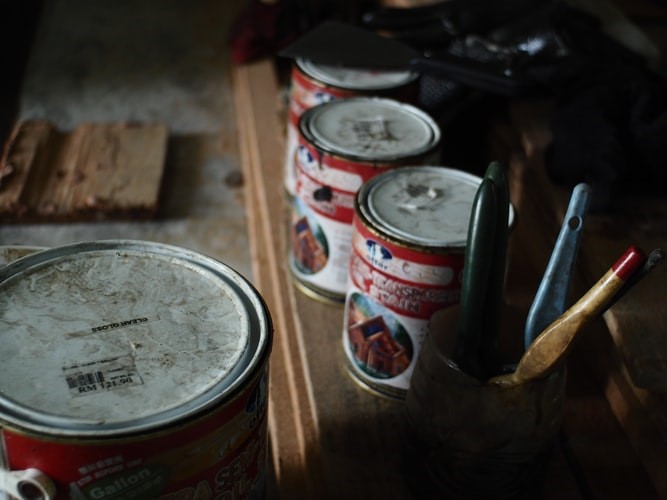
Now comes the fun part. Picking a paint colour can seem overwhelming at first with so many options out there, but luckily we have a few tips and tricks up our sleeves to help you along the way.
Paint tester pots
The first port of call when choosing a paint colour is to get tester pots. Buy some small sample pots of the paint colour you’re interested in, and paint swatches on a sheet of plain white wallpaper.
Tape this sheet up to each wall in the room you want to paint, observing how the colours look in a different light and at different times of the day.
What colour paints best hide imperfections?
Darker paint colours usually hide imperfections better, as they tend to absorb light more than pale hues.
Dark colours can also make your room look smaller, however, so if it’s a particularly tiny space or the room doesn’t get much natural light, opt for an eggshell finish to help bounce a little light around whilst still hiding any cracks or bumps.
How to choose the right paint colour for your kitchen
Kitchen paint colours can vary from vivid hues to soft neutrals. To start, take a look at the existing tones in your interior style: do you tend to lean towards rainbow brights, subtle neutrals or moody dark shades?
From there, you can decide what depth of colour to go for. Smaller kitchens will benefit from lighter hues to bring in as much light as possible, but if you have plenty of space to work with a dark shade can add heaps of drama and style.
A few perennial favourite paint shades for kitchens include:
- Silver grey
- Navy blue
- Forest green
- Cool-toned beige
- Pure white
Matching your paint colour to your kitchen cabinets
When it comes to choosing a paint colour that will sit well with the colour of your kitchen cabinets, there are two main paths to take.
Go for contrast:
Paint cabinets a striking, bold colour like navy and paint walls in a neutral shade like grey or beige, or vice versa.
Go for coordination:
Choose different tones within one colour family to keep the look cohesive but still create contrast within the space, for example, a deep putty colour on the cabinets and a soft beige on the walls.
Choosing the best bathroom paint colour
Although classic white will always be a strong choice for your bathroom paint colour, this often-overlooked space is an ideal place to play around with colour.
Of course, your bathroom paint colour will be somewhat decided by your existing bathroom suite and any tiling you might have.
Similar rules of thumb to our kitchen cabinets are at play here: go for contrast or go for coordination.
Some of our favourite bathroom paint colours are:
Small bathroom paint colour ideas
If your bathroom space is tiny or doesn’t get any light at all, you can still opt for dark hues. If you go for a deep, moody shade choose a semi-gloss finish to help distribute light throughout the room.
Choosing light shades, like whites or creams, can bring even more lightness and a calm atmosphere to a small bathroom.
How to pick the best living room paint colour
The world is your oyster when it comes to choosing a living room paint colour. Most living rooms don’t tend to be high-traffic areas, so you can play around with anything from matte to gloss finishes.
If you’re starting with a blank canvas:
The living room is where you can truly let your personality shine through your paint colour choice – browse interior design magazines and Pinterest to discover some interior styles that make your heart sing, and take it from there.
If you already have furniture and accessories in place:
Go for a shade that complements them. A great tip to get started is by looking at any of the metal finishes in the room – are they golden or silver tones? Golden tones will look best with a warm colour palette, whereas silver looks best with a cool palette.
Feature wall paint ideas for living rooms
If you want to try out a new colour but are too scared to fully commit, or you want to attract the eye to a certain feature in your living room, a feature wall is the solution. Pinterest is full to the brim with feature wall paint ideas for living rooms, so get browsing and go wild!
Neutral paint colours
If you can’t decide which paint shades you love best, you’re renting your property and can’t make any drastic changes or you simply love a minimalist palette, neutral paint colours are the one for you.
Far from boring, neutral paint colours span all sorts of shades and tones, from warm creams to the coolest greys. Choose between a warm colour palette and a cool colour palette, and play around with neutral tones within.
How much paint do I need for a room?
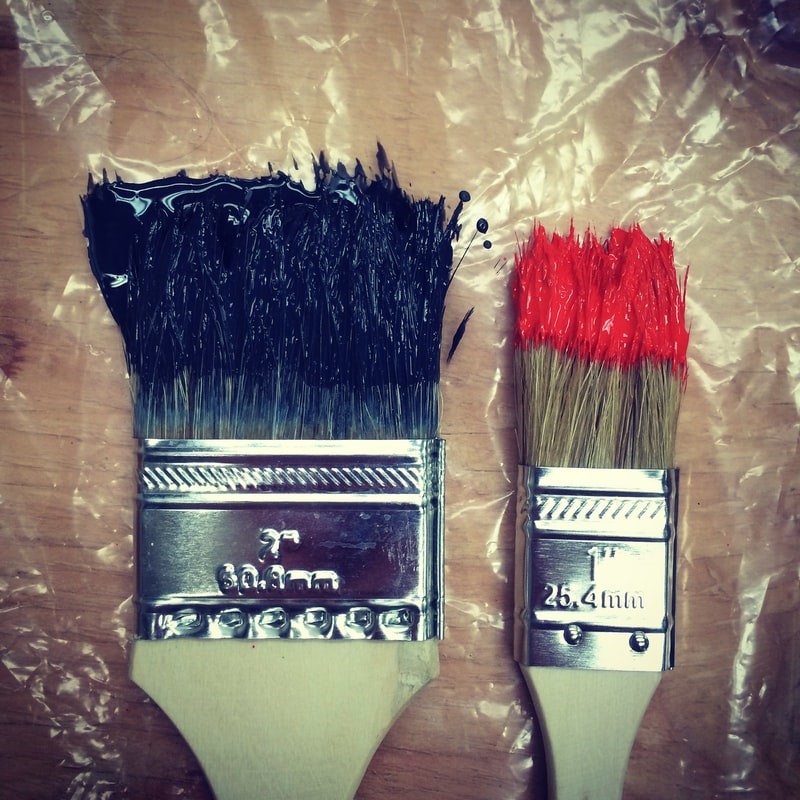
You’ve found your primer, decided on your finish and chosen a colour you love. When it comes to buying paint, knowing how much paint you need for a room can be the toughest decision of all.
How much paint will I need?
Here’s how to calculate a paint area.
Step 1: Do the math
As a general rule, you will need 1 litre of paint per 10 square metres of surface.
To calculate the square metre of a wall, all you need to do is multiply the height by the width.
Step 2: Layer up
Next, you’ll need to account for the number of coats you’d like to do. For two coats, multiply the amount by two, and so on.
Step 3: Cover all bases
Of course, you may have some awkward nooks and crannies to cover, so we’d always recommend getting a few extra litres of paint to make sure you don’t run out.
How many coats of paint on interior walls?
This largely depends on the result you’re after.
If you’ve chosen to use a primer, this will cut down on the number of coats you’ll need to get a professional finish.
Most interior paint colours require two coats for the most even coverage and best finish, but if you’re painting a very light shade over a very dark shade you may need a third coat.
Tools you need for painting
Of course, the artist is only as good as his tools! A good quality paint brush or paint roller is required to properly apply your paint.
Types of paint brushes for walls
Paint brushes come in a variety of materials and sizes, so it’s important to pick the right one for your paint project.
Paintbrush bristles
Paint brushes come with either natural or synthetic bristles or a combination of both.
Natural bristles work best for oil-based paints and guarantee a smooth finish, so they’re the best choice for painting woodwork.
Synthetic bristles work best with water-based paints, as they don’t absorb water. A synthetic brush will allow for the smoothest application possible from your emulsion paint.
Paintbrush sizes
What size paint brush should you choose?
| Brush size: | Best for: |
| 25mm / 1 inch | Small details, woodwork |
| 50mm / 2 inches | Larger woodwork like skirting boards |
| 75mm / 3 inches | Doors, smaller wall surfaces |
| 100mm + / 4 inches + | Walls, ceilings |
What is the best type of paint roller for walls?
Paint rollers are great if you have a large surface area to cover, saving you a lot of time and effort. Choosing the right one is important, and we’d always recommend using a good brush for edges and corners.
- Short shag rollers work with most paint types on most surfaces.
- Long shag rollers work well to cover up texture on walls.
- Foam rollers are perfect for achieving a smooth finish with emulsion paint.
Paint FAQs
Can I return the paint?
You can return paint once it’s in its unopened, undamaged packaging. If the paint itself is somehow faulty, it can of course be returned.
How much surface area does a litre of paint cover?
Most paint will cover 10 square metres of surface area.
How much is emulsion paint?
A 2.5 litre can of emulsion paint can range from €15 to €25, with some high-end brands costing even more than this.
Can I just paint over old paint?
It depends. If old paint is damaged, flaky, bumpy or otherwise unsightly, you’ll end up with a pretty bad finished result. Likewise, if you’re trying to cover dark paint with light paint, the result will probably be streaky.
We recommend investing in a good paint primer to ensure the best result.
What paint finish is easiest to clean?
The easiest paint finishes to clean are those with some level of gloss. Satin, semi-gloss and full gloss paint finishes are all easy to clean.
How do I buy paint online?
Follow these simple steps!
Step 1: Decide on the type of paint you want: emulsion or oil?
Step 2: Choose a finish: matte, eggshell, satin, semi-gloss or gloss?
Step 3: Choose a primer if one is needed.
Step 4: Figure out which tools you might need: brush or roller?
Step 5: Calculate the amount of paint you need. Use the 1 litre per 10 square metres of surface area rule.
Step 6: Add to basket, checkout, good to go!
Need to paint a room? We’ve got you (and your walls) covered.
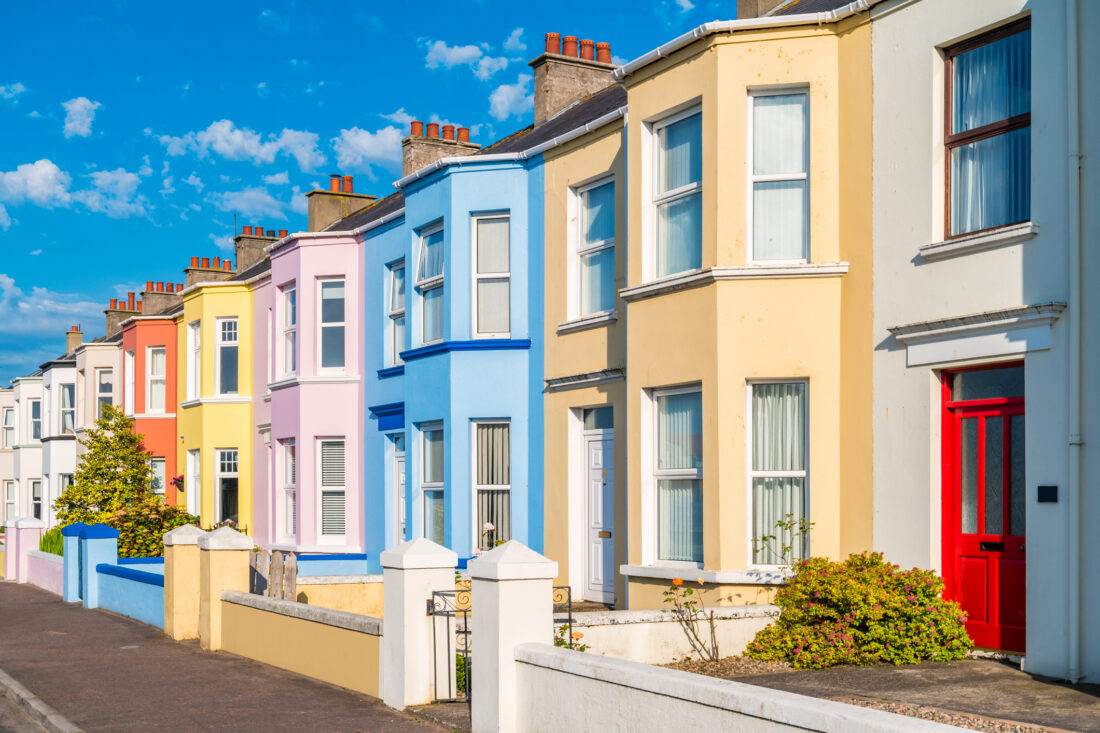
- Paint & Decorating
A Guide to Picking the Perfect Colour for Your Home’s Exterior
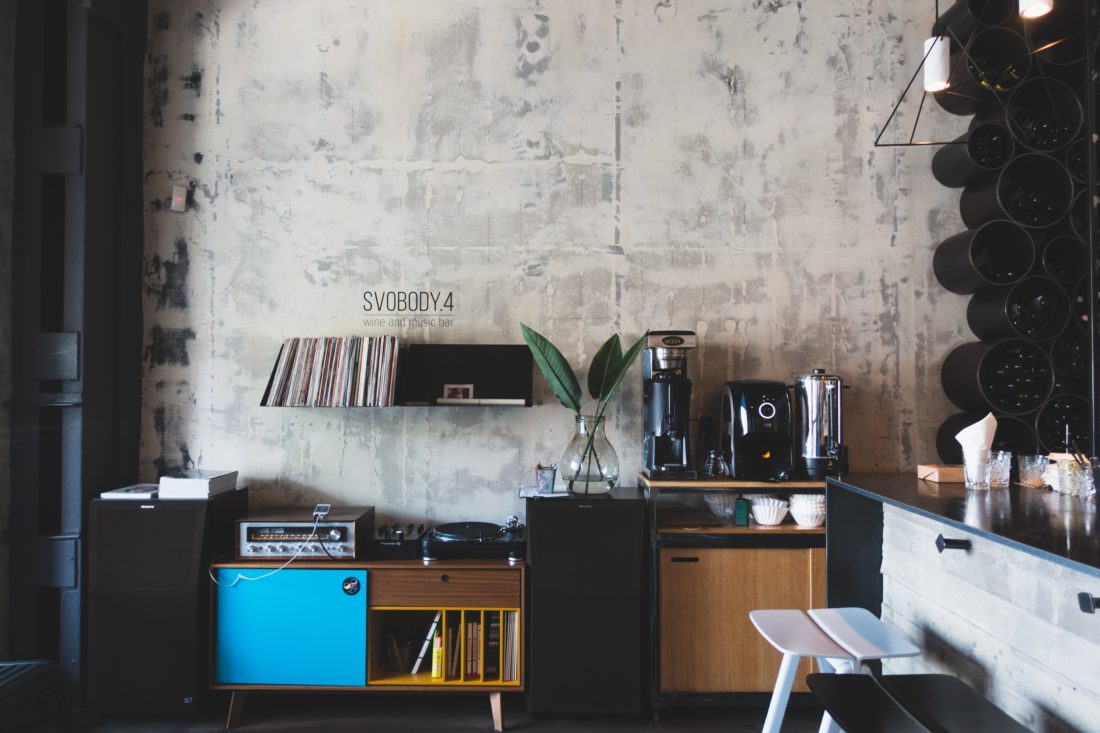
- Paint & Decorating
Everything You Need To Know About Textured Paint
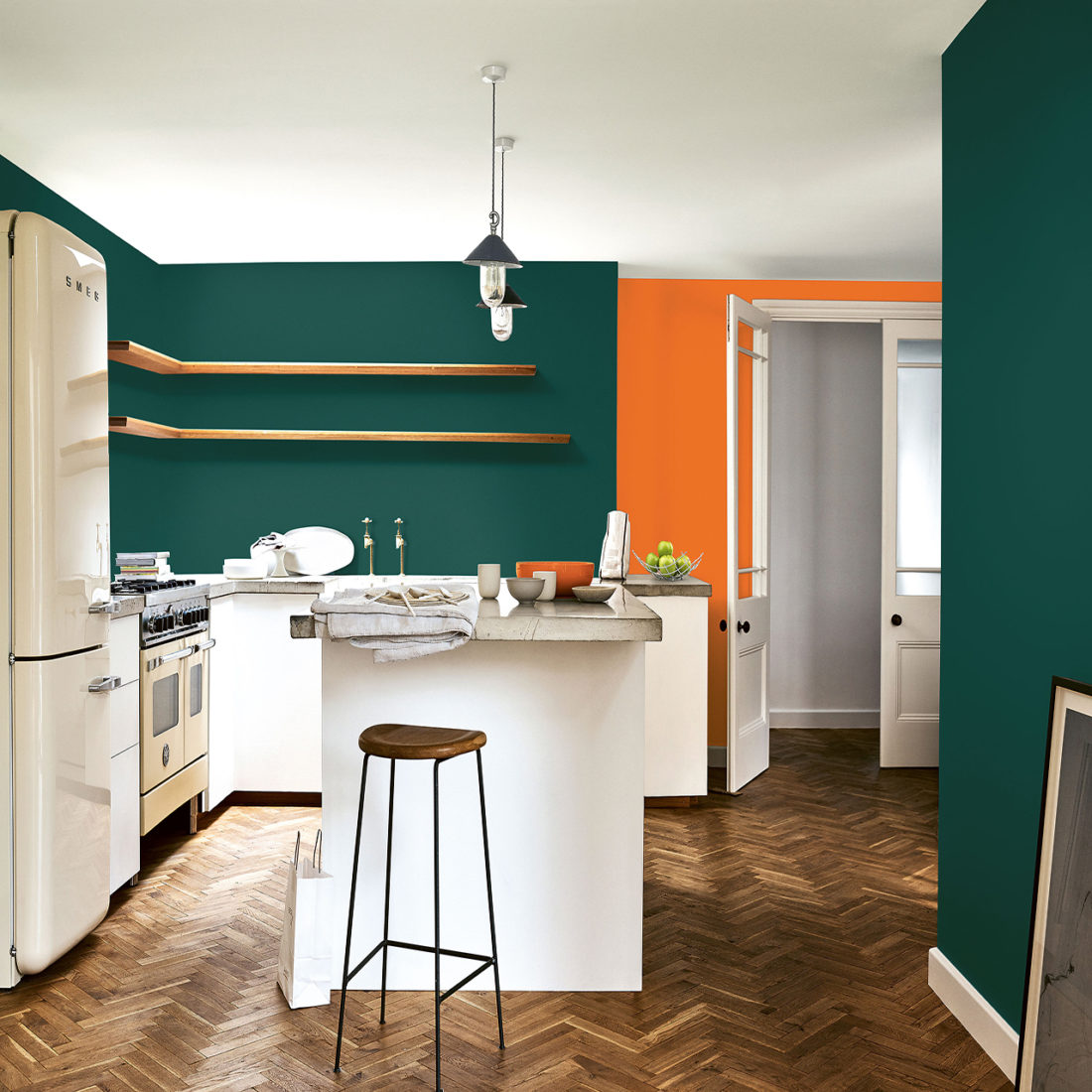
- Paint & Decorating,
- Home Décor
How To Paint Interior Walls
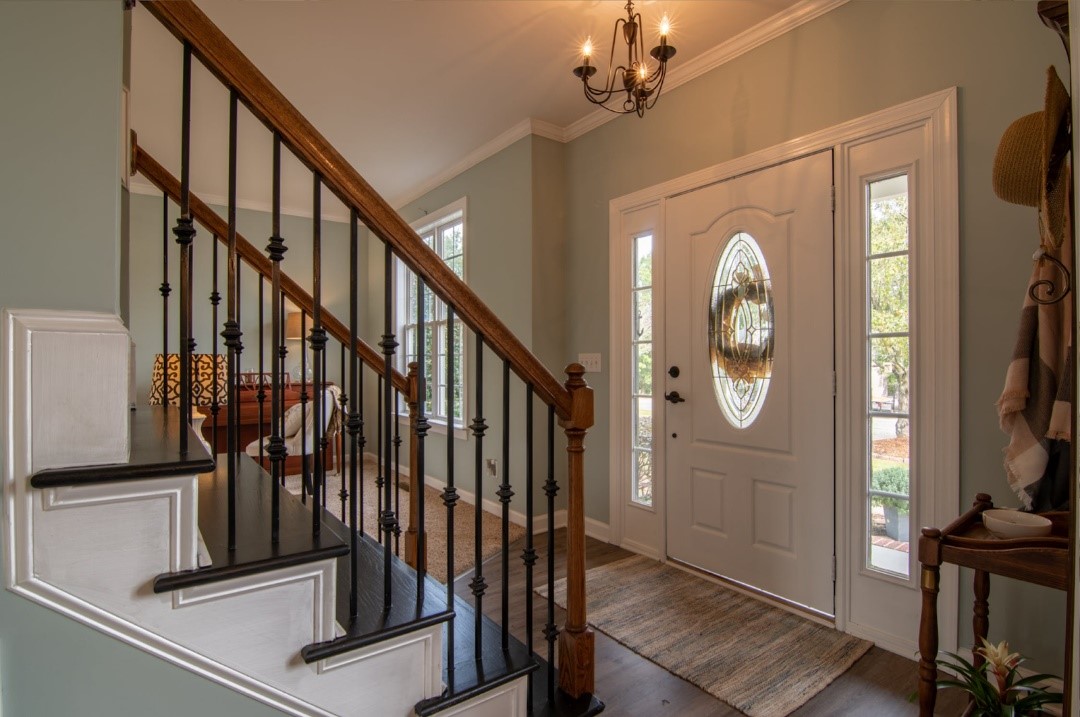
- Paint & Decorating
How To Paint Stairs: Everything You Need to Know
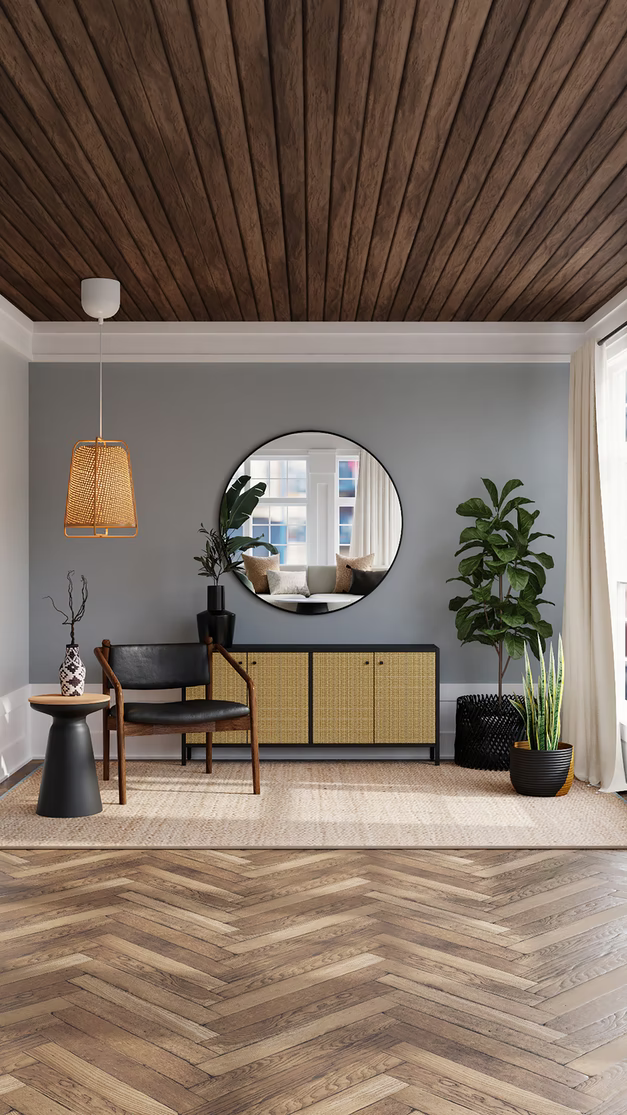
- Paint & Decorating
The Best Tips on How to Choose Paint Colours for Your Home
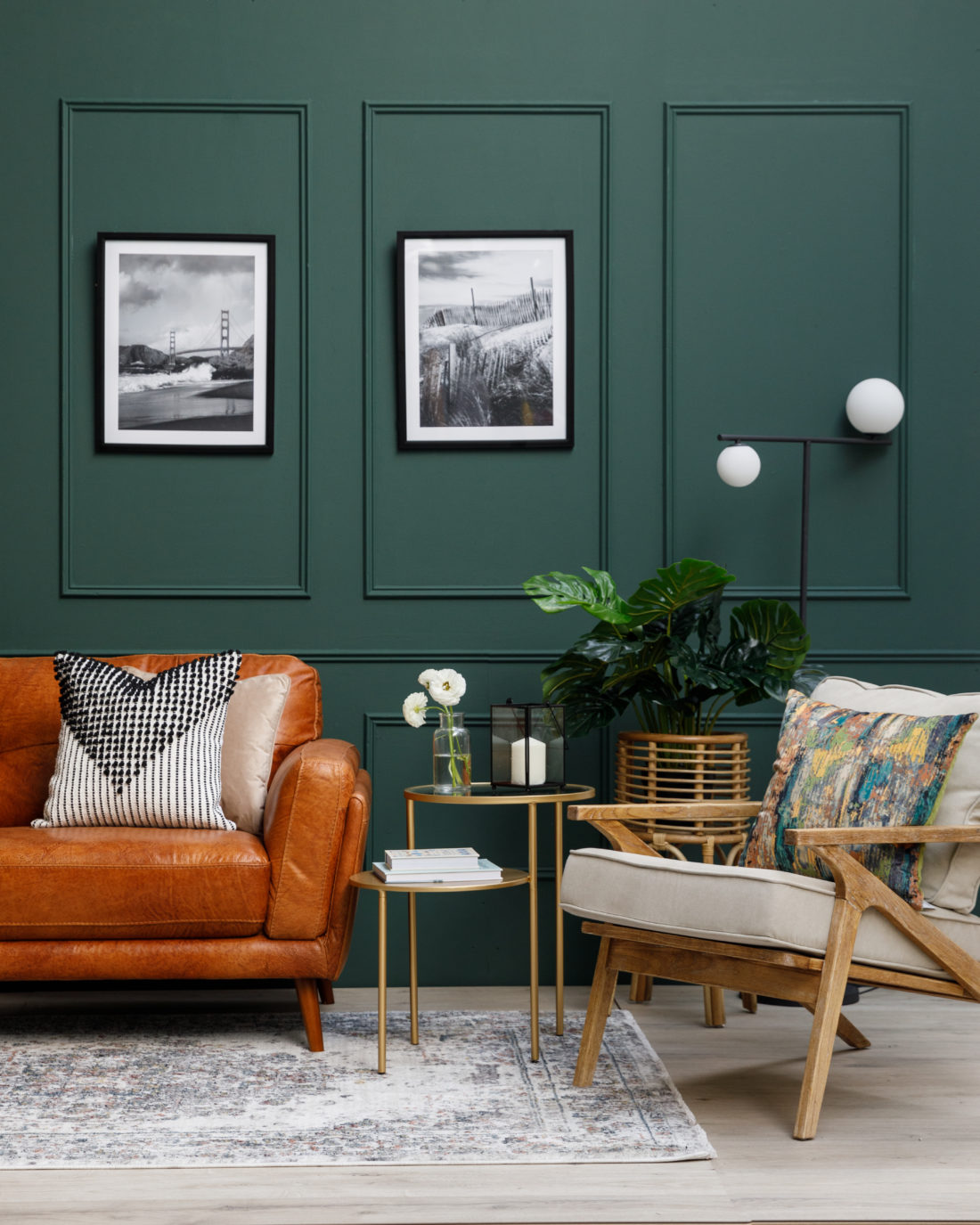
- Paint & Decorating,
- Home Décor
